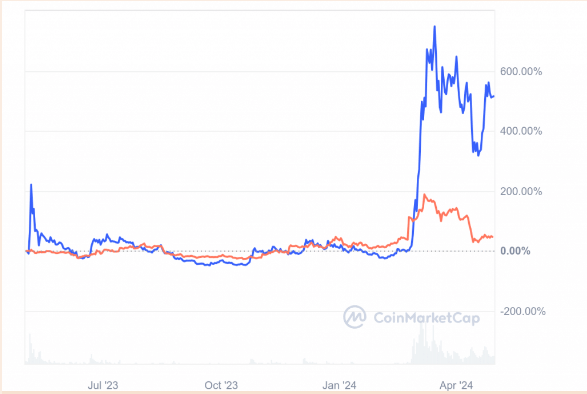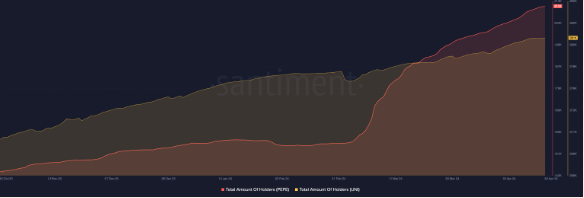According to a study, there is a growing belief among traders and analysts that they will not be able to replicate their performance with DeFi tokens during the 2021 bull cycle.
From UNI to PEPE: A Journey
The study indicates that there is evidence of this in the past as well. On April 30, another significant event occurred. A cryptocurrency whale sold all his Uniswap (UNI) tokens. Right after this sale, the whale purchased 329.3 billion Pepe (PEPE) tokens and withdrew them from Binance.
It is also worth noting that during the time the whale held UNI, he made a profit of 7 million dollars. However, considering that the expected bull run for altcoins did not occur, it would not be wrong to say that the whale’s move away from UNI paralleled a decrease in confidence in altcoins.
PEPE and UNI Comparison
On the other hand, this whale’s accumulation of PEPE indicates a long-term bullish expectation for meme coins. However, this decision may not have been a big surprise for analysts following PEPE.
When examining the price performance of both tokens, this situation justified PEPE investors. As of the time of writing, PEPE’s year-to-date (YTD) performance showed an increase of 420%.

On the other hand, an examination on the UNI side revealed that it has been trading at almost the same price since the beginning of the year. Despite the emerging data, the market value of DeFi tokens reached 104.48 billion dollars. On the meme coin side, this value was at 49.50 billion dollars.
Moreover, this difference, due to the more robust growth of meme coins last year, seems to present an unclear picture. Additionally, when examining the number of investors, UNI appears to have more investors.
The number of investors in PEPE is calculated to be 211,000, while for UNI, it is 381,000. However, numerical analyses, including market value, seem to not clearly show the situation.

PEPE and UNI Price Analysis
As of the time of writing, the price of PEPE, following a 6.57% decline linked to the drop in Bitcoin, was trading at $0.000006647.
During this period, the market cap of PEPE decreased to 2.8 billion dollars while the 24-hour trading volume increased by 29% to 833 million dollars. This was interpreted as investors possibly engaging in short selling.
On the other hand, UNI experienced a drop of over 7%, trading at $7.11. This price reflected in the market cap, which decreased to 4.255 billion dollars, while the 24-hour trading volume decreased by 35% to 127 million dollars.

 Türkçe
Türkçe Español
Español









